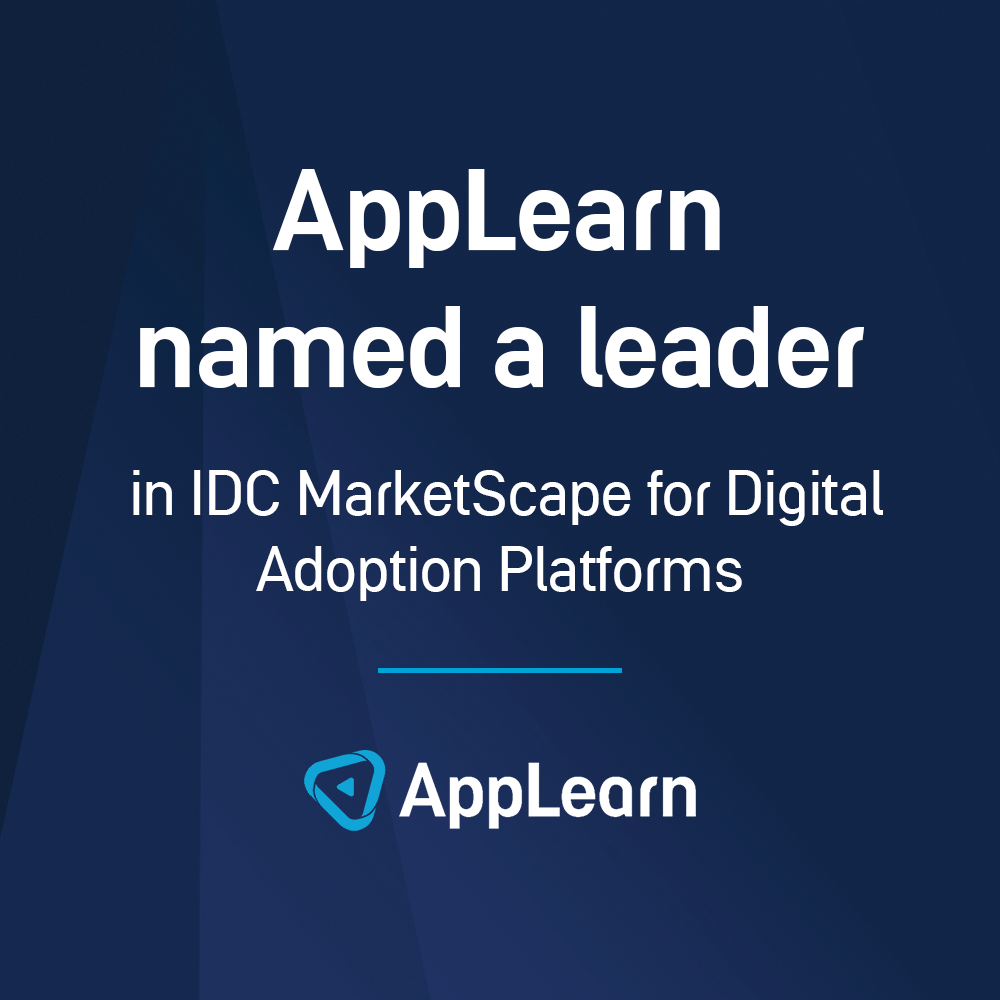News
AppLearn and BNB join forces in a strategic partnership
AppLearn and BNB join forces in a strategic partnership
Leading digital adoption provider, AppLearn, has announced a new partnership with digital transformation and Workday specialists, BNB.
BNB - Business Network Builders work closely with clients to enhance their digital capabilities and deliver more agile ways of working. The IT consulting Workday specialists have a great deal of experience working with HR and finance teams and focus a large portion of their efforts on Workday deployments; helping teams roll out and adopt the leading enterprise software.
Working alongside AppLearn’s digital adoption platform—Adopt—the two businesses offer a complimentary service targeted at supporting businesses not only manage the change and digital transformation process end-to-end but ensuring continued adoption and improved user experiences when working with enterprise software.
James Stockton, Partnerships Manager at AppLearn commented: “BNB place strong emphasis on customer service and support which is a valuable differentiation in the tech consultancy space. The business works closely with clients throughout the transformation process and go beyond the so-called day-to-day or quick-fix problems; forming a true partnership. The team at BNB really embed themselves into the transformation process ensuring they drive value and align closely to client objectives.”
This new partnership brings together over 30 years of experience in the digital transformation and adoption space, along with a proven track record of helping global organizations implement and maintain successful change.
Stockton, continued: “With AppLearn’s leading digital adoption platform and knowledge of the HR market, and BNB’s experience delivering successful Workday implementations, we will no doubt be able to support clients in maximizing their investment in technology and improving their overall digital capabilities.”
"We are excited to be working with AppLearn" continued César García Galan, Partner at BNB, "Their adoption platform is a game-changer, and we believe that our partnership will help business to fully leverage the power of digital technologies as Workday and drive growth"
By joining forces, AppLearn and BNB hope to help more organizations successfully navigate the digital change process and ensure long-term and effective software adoption.
For more information about AppLearn and our Partnership Program, including how to join, please visit our partner page.
About AppLearn
AppLearn is a leading digital adoption platform vendor that helps enterprises improve the data quality and productivity of their key internal systems. It does this by adding predictive analytics and personalized support to HCMs, ERPs, CRMs, and beyond.
AppLearn’s Adopt platform helps organizations to see how their people use their tech and place real-time guidance in any app to support them while they work.
While valuable for single systems, adding Adopt to multiple systems can scale consistent support and measurement across any process or tech stack.
AppLearn is trusted by global HR teams in market-leading businesses across 100+ countries. In fact, organizations like EY, Rolls-Royce, Interfor, and PBF Energy are already using Adopt to analyze their applications, guide their people, and streamline their tech stacks.
For more information, visit: https://applearn.com/.
About BNB
BNB is a consulting company and Workday certified partner that enhances the integration of technology through a professional team and a unique business model, based on understanding and closeness with customers.
BNB develops a genuine way of consulting by bringing together a traditional and disruptive formula; a work process in which both understanding and closeness are the top priority. BNB aims to facilitate the continued adoption of technologies through a unique people-centric approach. BNB does this by empowering organizations to change HR and finance, which improves the employee experience and drives true business transformation.
BNB has quickly grown to a medium-sized enterprise since its foundation in 2003. It is now a leading technology consulting services organization with strategically located offices in Europe and LATAM: Barcelona, London, Madrid, Milano, Paris, Mexico City, and Buenos Aires, and is trusted by 50+ global customers from various industries.
For more information, visit: bnetbuilders.com.
Article by
Adam McVey
Share this article





